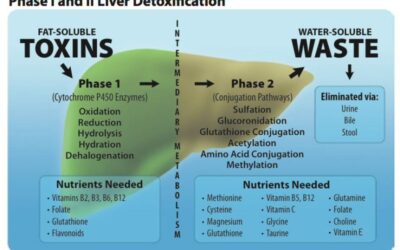Manganese is essential for the proper use of proteins and carbohydrates, for reproductive health, and the action of enzymes responsible for energy production and the creation of vital fatty acids. In dogs, most ligament injuries, especially cranial cruciate ligament (CCL) disease, can be traced back to a deficiency in the vital trace mineral manganese. A dog has a fairly high requirement of this trace nutrient and it is unfortunately far too low in many homemade raw meals. Manganese is especially low in commercial kibbles that do not contain bioavailable forms of this nutrient. If we are examining homemade diets for a medium size dog, many analyzed diets are coming in at an incredibly low 0.25 mg or less per day. A medium sized dog needs at least 7 times that amount per day, and that is a conservative minimum. Goat hair, chicken feathers (notably the red feathers from pullets), red fur, and lamb’s wool contain large amount of manganese, as well as organs and bone marrow which provide a fair amount. These are the manganese sources for wild canines. Unfortunately, not many of us are providing hair and feathers. I am one of the few who actually does raise chickens and ducks, so my dogs do receive feathers (red feathers from pullets) in their meals.
When it comes to feeding our pets, liver and bone contain a fair amount of highly bioavailable manganese, but at a yield of 0.2 mg/100 g in bone and 0.4 mg/100 g in liver, it is not sufficient to meet daily needs because liver and bone are not fed in large amounts. Green tripe provides ten times the manganese of liver, mussels provide sixteen times, and hemp seeds nineteen times the manganese! And, comparingly manganese in lean beef to spinach, spinach contains 40 times the amount of manganese than lean ground beef. You would need to feed almost 17,000 calories of beef or 418 calories of beef liver to meet the same manganese level as a mere 23 calories of spinach. Mussels, green tripe, hemp seeds, pumpkin seeds, spinach, blackberries, turmeric, ginger, and lettuce are all excellent sources of manganese that are bioavailable to dogs. If you are not one to feed green tripe because of the smell or lack of sourcing-availability, adding a scoop of green lipped mussel powder will meet daily manganese requirements, along with other minerals. If you are adding seeds to boost manganese needs (and other nutrients), add Vitamin C rich foods. Seeds contain anti-nutrients that bind with minerals in the gut. One such anti-nutrient is phytic acid. Since seeds are fed in such small quantities (teaspoons), the small amount of phytic acid can be “deactivated” by adding Vitamin C rich foods. Vitamin C will also increases iron absorption as an added bonus!
If your dog’s meals are lacking in vital manganese and you absolutely cannot add enough food sources of this nutrient, a supplement would be wise to consider or your dog’s health may suffer. But not all supplements are created equally! Do not supplement with this or any nutrient until you first research the antagonistic nutrients and the partner nutrients. Read my post entitled Commonly Deficient Nutrients and Supplementation before purchasing a supplement.
©2019 Kimberly Lloyd, PhD, BCHHP, Cert Raw Dog Nutritionist



